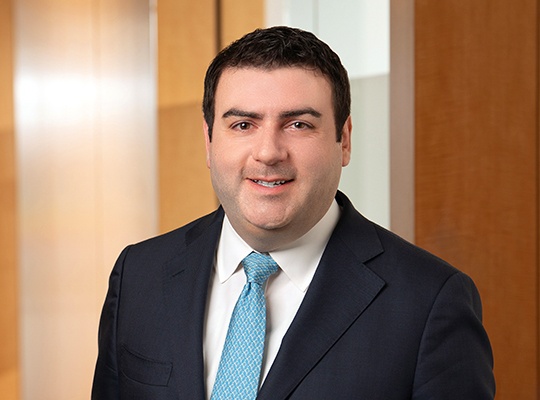U.S. Treasury’s Benchmark TIC SHC Survey and Implications for Investment Managers
In March 2017, the U.S. Department of the Treasury (Treasury) and the Federal Reserve Bank of New York (FRBNY) will conduct a benchmark survey of U.S. ownership of foreign securities. The information will be gathered on Treasury International Capital (TIC) Form SHC (TIC SHC),1 which captures certain data that investment managers are not required to report on the more frequently-collected TIC reports (such as the monthly TIC Form SLT).2 Most notably, unlike other TIC reports, U.S. investment managers that advise investment funds with foreign investments may need to report those investments on TIC SHC, even if they are held by a U.S. custodian on the investment fund’s behalf. Thus, U.S. investment managers that have previously determined that they are exempt from filing other TIC reports may be required to file TIC SHC.
Overview of TIC SHC
TIC SHC is a mandatory benchmark study commissioned by the Treasury and administered by the FRBNY every five years.3 The survey reviews holdings of foreign portfolio securities – including short- and long-term securities and selected money markets instruments – by U.S.-resident custodians and end-investors. The survey is part of a series of TIC and related forms4 that are used to calculate U.S. balance of payment data, to formulate U.S. international financial and monetary policies and to generate International Monetary Fund statistics.
TIC SHC contains three parts. Schedule 1 consists mainly of basic identifying information and a summary of the data, if any, reported on Schedule 2 and/or Schedule 3. Schedules 2 and 3 require detailed reporting of specific holdings and are significantly more burdensome than Schedule 1. Specifically, Schedule 2 requires detailed security-by-security reporting of foreign securities owned by U.S.-resident investors, which are either held by a foreign-resident custodian or held directly by the U.S. investor or its investment manager.5 Schedule 3 requires U.S. investors to identify any U.S. custodians that hold foreign securities on their behalf and to report the value of those securities.6
Who Must Report
Reporting obligations are triggered in two ways. First, all U.S.-resident entities that are contacted by the FRBNY are required to file at least Schedule 1 and must also file Schedule 2 and/or 3, as applicable, if the entity exceeds the reporting threshold (as described below) for one or both of those Schedules. Second, any entity that exceeds the reporting threshold for Schedule 2 or 3, regardless of whether or not it is contacted by the FRBNY, must submit Schedule 1 and Schedule 2 and/or 3, as applicable. These reporting thresholds are assessed independently of one another, so a reporter may need to file only Schedule 2, only Schedule 3 or both Schedules. The reporting threshold for Schedule 2 is met if the total fair value of reportable foreign securities held directly by the U.S.-resident reporter or by a foreign-resident custodian is at least $200 million.7
The reporting threshold for Schedule 3 is met if the total fair value of reportable foreign securities held by a U.S. custodian on the reporter’s behalf is at least $200 million. Each reporting threshold is to be measured as of the close of business on December 30, 2016. For purposes of determining whether the threshold has been met for either Schedule, investment managers and other reporters must consolidate all U.S.-resident parts of their organization (including U.S. parent companies and all U.S. branches and subsidiaries), as well as the U.S. investment funds they manage.
What to Report
Investment managers must report ownership of foreign securities on behalf of their own organization (i.e., the adviser, its U.S. parent and any U.S. branches and subsidiaries) as well as the U.S. investment funds they manage. The TIC SHC instructions broadly define funds to include “all investment vehicles that pool the money of one or more investors and that invest the pooled money in one or more of a variety of assets” – thus encompassing (without limitation) open- and closed-end investment companies, money market funds, REITS, investment trusts, index-linked funds, ETFs, hedge funds and common trust funds. Any shares or similar units (including limited partnership interests) issued by funds established outside the United States, which are held by U.S. residents, are within the scope of TIC SHC. In addition, investment managers that create master-feeder fund structures, both outside and inside the United States, should report any portfolio investments between the U.S.- and foreign-resident funds that the manager organizes.
Reporting Dates
If required to file TIC SHC, an entity must submit the report by March 3, 2017. The report should reflect holdings as of December 30, 2016.
Penalties for Failure to Report
TIC SHC is authorized and required by an Act of Congress. There is potential civil and criminal liability for failure to file timely and accurate reports for any U.S. person or group subject to the reporting requirements. Any U.S. person or group that fails to provide timely and accurate data on TIC SHC may be subject to one or both of: a civil penalty between $2,500 and $25,000; or injunctive relief ordering compliance. Any U.S. person or group that willfully fails to submit any of the information required in the report on TIC SHC may be subject to a fine up to $10,000, and, if an individual, may be subject to imprisonment for up to one year, in addition to or instead of the fined amount. Further, officers, directors, employees and agents of any entity with filing obligations, who knowingly participate in such a willful violation, are subject to the same penalties.
Important Considerations for Investment Managers
Although completing TIC SHC is a potentially burdensome exercise, entities that already file other TIC and related forms (in particular, TIC Form SLT) may be able to rely on existing reporting systems within their organizations. However, reporters should note that, while TIC SLT and certain other TIC Forms expressly exclude securities held by U.S. custodians from investment managers’ reporting obligations, TIC SHC is designed, in part, to reconcile the data the FRBNY receives from such custodians, and therefore the form requires investment managers to compile and report that information. Investment managers are expected to make reasonable efforts to determine the extent to which foreign fund shares are held by or on behalf of U.S.-resident clients and may be required to coordinate with third parties, such as custodians and administrators, in order to compile the reports.
Footnotes
1) Quinquennial Report to the Federal Reserve Bank of New York, Report of U.S. Ownership of Foreign Securities, Including Selected Money Market Instruments. The TIC SHC form and instructions are available here.
2) For an overview of the other parts of the TIC reporting system and related reporting regimes that may apply to U.S. investment managers or their affiliates, see Julien Bourgeois, Philip Hinkle, and Matthew Barsamian, Foreign Holdings and Transactions with Foreign Persons: Reporting Responsibilities for US Investment Managers and Other Financial Institutions, The Investment Lawyer, Vol. 21, No. 4 (April 2014). For more in-depth discussion of particular forms, please refer to the following DechertOnPoints: U.S. Treasury’s Benchmark TIL SHL Survey and Implications for Investment Managers; TIC B Forms are Amended to Explicitly Cover U.S. Investment Managers; Changes to TIC Form D Highlight U.S. Investment Managers’ Potential Reporting Obligations Regarding Cross-Border Derivatives Positions; and Treasury Is Adopting New Reporting Requirements Regarding Cross-Border Holdings Applicable to U.S. Investment Managers.
3) During the years when the benchmark study is not conducted, the Treasury collects data on TIC Form SHCA, which is a survey that requires reporting by only the very largest U.S.-resident custodians and end-investors (including fund managers).
4) Related TIC Forms SHL and SHLA are administered every five years and annually, respectively, and collect data on the holdings of U.S. securities by foreign residents. The most recent TIC SHL report was collected in August 2014.
5) Schedule 2 is used to report foreign securities: (i) that the U.S.-resident investor safe-keeps for itself or for its U.S.-resident clients; (ii) for which the U.S.-resident investor directly employs foreign-resident sub-custodians or U.S.-resident or foreign-resident central securities depositories (CSDs) to manage the safekeeping of those securities; or (iii) that are instruments of a type where there is no U.S. custodian to manage the safekeeping of those securities.
6) Schedule 3 is used to report summary amounts for all foreign securities entrusted to the safekeeping of a U.S.-resident custodian, excluding those entrusted to a U.S.-resident CSD.
7) This threshold marks a change from previous benchmark surveys, for which the reporting threshold was $100 million. As a result of the increased threshold, some entities that were required to report in the past may no longer be subject to this reporting obligation.




